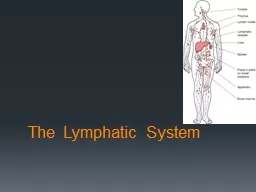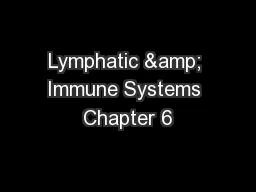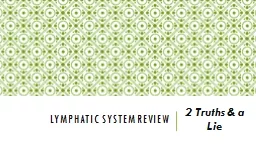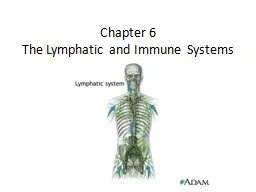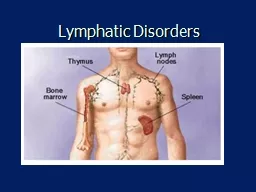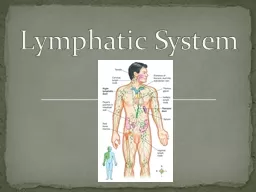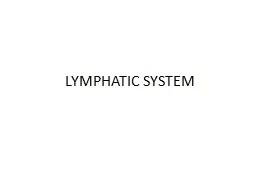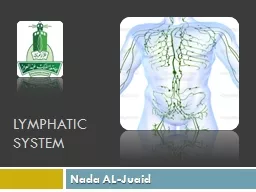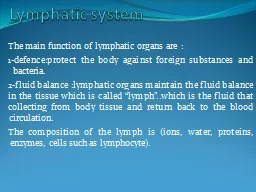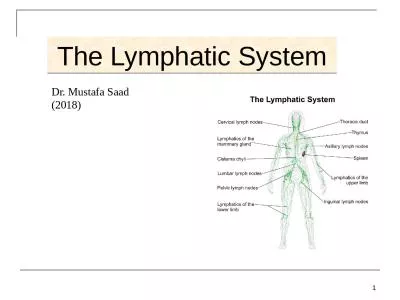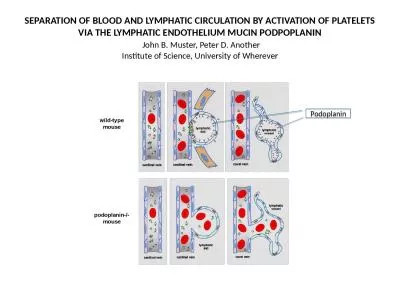PPT-The Lymphatic Syste m What is the lymphatic system?
Author : summer | Published Date : 2022-02-12
A n extensive drainage network that helps keep bodily fluid levels in balance and defends the body against infections Together with lymphoid organs and tissues
Presentation Embed Code
Download Presentation
Download Presentation The PPT/PDF document "The Lymphatic Syste m What is the lympha..." is the property of its rightful owner. Permission is granted to download and print the materials on this website for personal, non-commercial use only, and to display it on your personal computer provided you do not modify the materials and that you retain all copyright notices contained in the materials. By downloading content from our website, you accept the terms of this agreement.
The Lymphatic Syste m What is the lymphatic system?: Transcript
Download Rules Of Document
"The Lymphatic Syste m What is the lymphatic system?"The content belongs to its owner. You may download and print it for personal use, without modification, and keep all copyright notices. By downloading, you agree to these terms.
Related Documents

